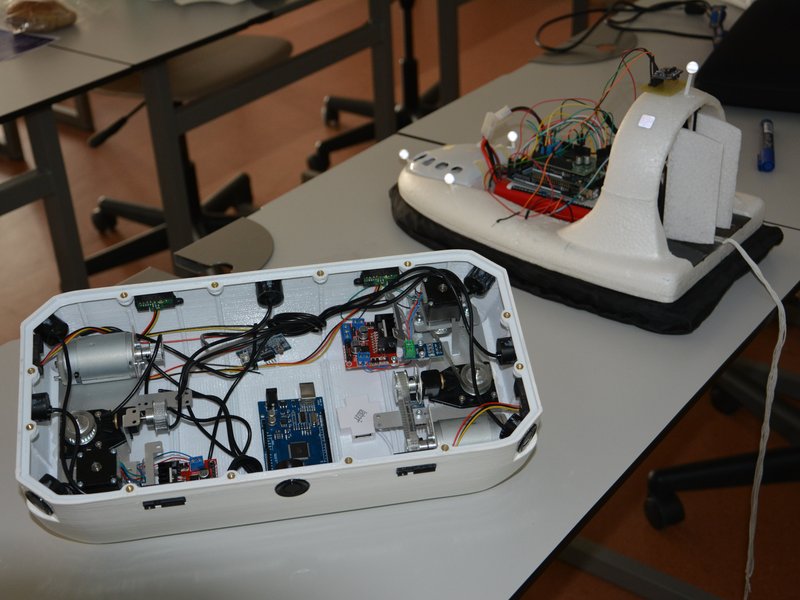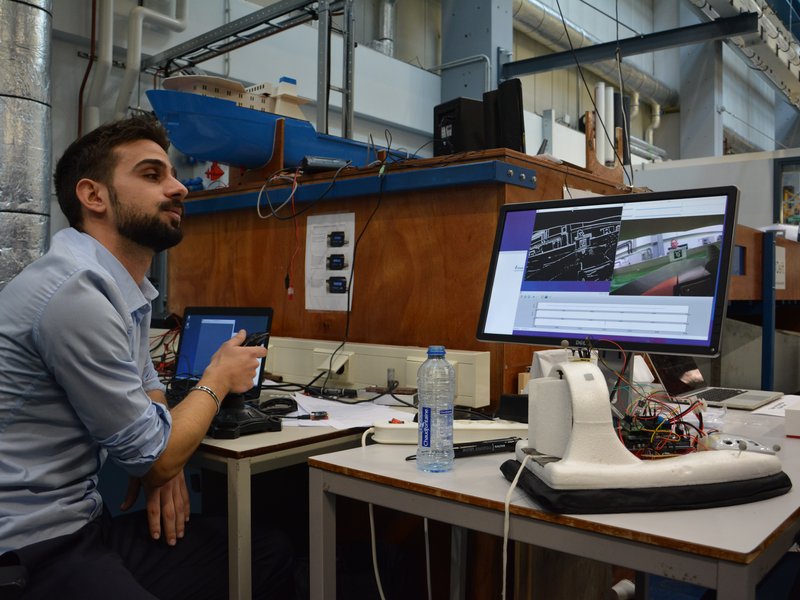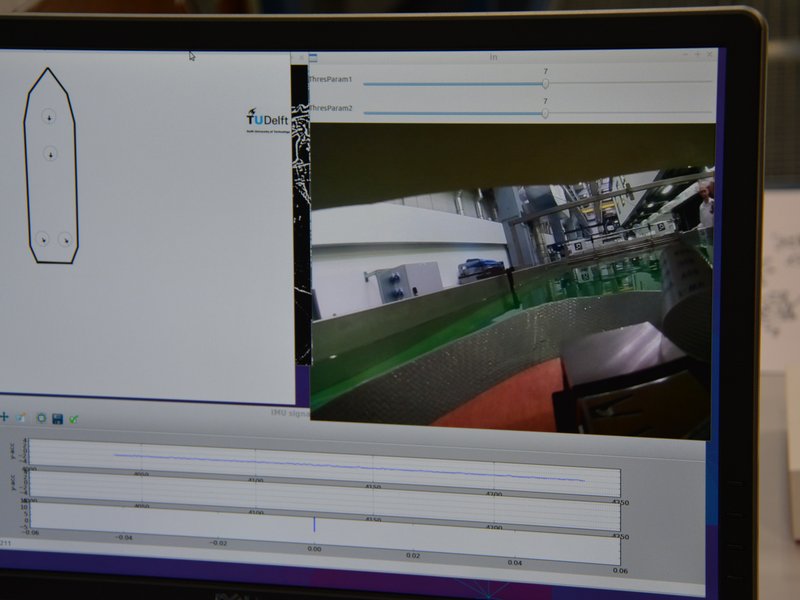
Robohub.org
All algorithms on deck: Working on robotic ships
By: Jurjen Slump
QR-codes that provide autonomous vessels with traffic information on buoys, ships or port buildings. Algorithms for controlling a ship’s unexpected movements. Fleets of autonomous ships that are monitored from on-shore control centres. Researchers at Delft University of Technology are working on the future of shipping. They envision a naval world that will be drastically different from today’s shipping industry.
The future is unmanned. And while everybody is talking about Tesla and Google’s self-driving cars, one tends to forget about what is happening in the oceans. As of now, robotic ships are only sailing in labs, but they will be eventually steaming out into the real world. Rolls Royce predicts that it will test a fully autonomous, unmanned ocean-going ship by 2035. It won’t be long before remote-controlled ships will appear on the high seas, as is shown in this futuristic video from Rolls Royce.
https://www.youtube.com/watch?v=vg0A9Ve7SxE
Autonomous vessels will have a major impact. “Imagine what will happen if you save cost and time on one of the biggest sectors in the world”, says Vittorio Garofano of the faculty of Mechanical, Maritime and Materials Engineering (3mE) at Delft University of Technology. The benefits are clear: cost reduction, reduced emissions, increased safety and increased cargo capacity, to name a few. Besides, people won’t lose their jobs over this development, as by 2025 a shortage of approximately 150,000 maritime officers is expected.
Adaptive control algorithms
But there are a lot of challenges that must be met before the captain can leave the bridge and the algorithms take control. For example, which technologies are needed so that autonomous ships can function hundreds of kilometres from shore? How can robotic ships be made as safe as conventional ships? How should they interact with each other and how do you make sure that the power and propulsion systems work properly when nobody’s on board?
These are some of the key challenges that the research of Delft University of Technology focusses on. Several algorithms have been developed to ensure a safe and robust operation, explained PhD student Ali Haseltalab during a colloquium on autonomous vessels last week. “With an adaptive control algorithm, which learns the dynamics of the propeller, you can control the ship perfectly”, Haseltalab told. Other algorithms are developed for power management, fault-detection and health monitoring.
The Grey Seabax
These mathematics are put to the test at a 3mE-laboratory, which consists of two giant water tanks with QR-codes on the sides. To study the dynamical behaviour of autonomous vessels, researchers built 3 prototypes: The Grey Seabax, the Amphibian and the Delfa-1. The Grey Seabax is a remote-controlled vessel or RCV – the first essential step towards a fully autonomous ship.
One of the things Garofano and his colleagues are working on is a robust communication infrastructure. The Grey Seabax recognises QR-codes and will be able to respond accordingly. These binary markers can be used for several purposes: they could represent a waypoint, a traffic redirection signal or a building ashore.
Distributed control
The computer lies at the heart of robotic ships. To enhance safety, it is important that the central computer hands over as much as control to intelligent sensors and actuators. With the Amphibian and Delfia-1, research is being done on the shift from centralised to distributed control. “If something fails, the system continues”, Garofano says. “That increases the survivability.”
With the Amphibian being a hovercraft, new transportation routes can be explored. But the vessel is still very difficult to control, tells Garofano. “GPS offers an accuracy of metres, but we need millimetres.”
Surveillance and inland shipping
Back to the future. Where will the first robotic ships be deployed? For surveillance, maritime litter collection, patrolling and inspection, says associate professor Rudy Negenborn. “They can be used for monitoring water quality, to make sure that nobody can dump chemicals into the ocean unnoticed.”
Negenborn thinks that the big container shipping corporations will be the last to switch to robotic ships. They will first appear on the rivers. “For inland shipping businesses, the salary costs are relatively high compared to big container ships”, says Negenborn. “For them, autonomous shipping is more interesting.”
Safety
All researchers agree that, in the end, safety will be one of the biggest advantages of robotic ships. Nowadays, at least 70 percent of all incidents at sea are caused by human error. Autonomous shipping will lead to a drastic reduction of the number of incidents and casualties. “Robots will ensure consistency of operations”, explains Haseltalab. “Autonomous systems will always be there. They don’t get tired.”
If you liked this article, you may also be interested in reading more about robotic ships and underwater drones:
- Designing and deploying a fleet of autonomous boats on the canals of Amsterdam
- Who goes where? Simulated robot boats self-organize to defend against attacks
- Robots Podcast #132: The OpenROV project, with Eric Stackpole and David Lang
- CoCoRo: Tracking the development of the world’s largest autonomous underwater swarm
- Unmanned and underneath: Stay in the know about underwater drones
See all the latest robotics news on Robohub, or sign up for our weekly newsletter.
tags: c-Research-Innovation, RoboValley, Service Professional Underwater







